-
 Bitcoin
Bitcoin $118400
0.47% -
 Ethereum
Ethereum $3836
2.20% -
 XRP
XRP $3.157
2.98% -
 Tether USDt
Tether USDt $0.9999
-0.03% -
 BNB
BNB $801.5
1.31% -
 Solana
Solana $180.9
2.07% -
 USDC
USDC $0.9999
-0.02% -
 Dogecoin
Dogecoin $0.2225
2.50% -
 TRON
TRON $0.3285
-1.02% -
 Cardano
Cardano $0.7789
2.60% -
 Hyperliquid
Hyperliquid $43.60
2.39% -
 Sui
Sui $3.892
4.41% -
 Stellar
Stellar $0.4229
3.34% -
 Chainlink
Chainlink $18.01
3.98% -
 Hedera
Hedera $0.2745
6.77% -
 Bitcoin Cash
Bitcoin Cash $582.3
3.38% -
 Avalanche
Avalanche $23.77
1.04% -
 Ethena USDe
Ethena USDe $1.001
0.01% -
 Toncoin
Toncoin $3.493
3.59% -
 Litecoin
Litecoin $110.0
2.48% -
 UNUS SED LEO
UNUS SED LEO $8.936
-0.37% -
 Shiba Inu
Shiba Inu $0.00001304
2.49% -
 Uniswap
Uniswap $9.999
1.09% -
 Polkadot
Polkadot $3.897
3.26% -
 Monero
Monero $308.6
-0.83% -
 Dai
Dai $0.9999
-0.01% -
 Bitget Token
Bitget Token $4.504
-0.04% -
 Pepe
Pepe $0.00001154
2.95% -
 Cronos
Cronos $0.1471
3.06% -
 Ethena
Ethena $0.6691
19.53%
Is the AVL indicator reliable for crypto scalping?
The AVL indicator helps crypto scalpers gauge buying/selling pressure by combining price and volume, but its lagging nature can create false signals in fast-moving markets.
Jul 31, 2025 at 12:50 pm
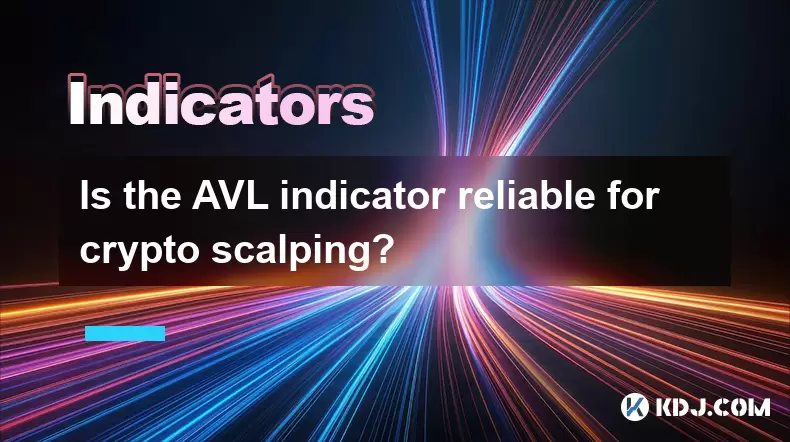
Understanding the AVL Indicator in Cryptocurrency Trading
The AVL indicator, also known as the Accumulation Volume Line, is a technical analysis tool that combines price and volume data to measure buying and selling pressure in financial markets. In the context of cryptocurrency scalping, where traders aim to profit from small price changes over very short timeframes, the reliability of any indicator is critical. The AVL indicator plots a cumulative total of volume, adjusted by the direction of price movement—adding volume on up days and subtracting it on down days. This allows traders to see whether volume is supporting price trends. When the AVL line rises, it suggests accumulation (buying pressure), and when it falls, it signals distribution (selling pressure).
For crypto scalpers operating on 1-minute to 15-minute charts, the AVL indicator may offer insights into short-term momentum shifts. However, due to the high volatility and frequent noise in crypto markets, the raw signal from AVL can sometimes produce false divergences or lag behind actual price action. Therefore, relying solely on the AVL indicator without confirmation from other tools can lead to inaccurate entries and exits.
How the AVL Indicator Works Technically
To understand its reliability, one must examine how the AVL indicator is calculated. The formula begins with an initial value, typically set to zero or the first volume reading. For each subsequent period:
- If the closing price is higher than the previous close, the current volume is added to the cumulative total.
- If the closing price is lower, the current volume is subtracted.
- If the close is unchanged, volume is neither added nor subtracted.
This creates a running total that reflects the net volume flow. In fast-moving crypto markets like Bitcoin or Ethereum, where price can swing dramatically within minutes, the AVL may not react quickly enough to sudden reversals. For example, during a flash crash on Binance or Coinbase, volume spikes downward, but the AVL line might continue reflecting prior accumulation, creating misleading signals. Therefore, the lagging nature of this cumulative calculation can reduce its effectiveness for scalping, where timing is everything.
Integrating AVL with Other Indicators for Scalping Accuracy
To enhance the reliability of the AVL indicator in crypto scalping, traders often combine it with leading indicators such as the Relative Strength Index (RSI), Moving Averages, or Volume Profile. For instance: - Use AVL to confirm trend strength while relying on RSI for overbought or oversold signals.
- Apply a short-term Exponential Moving Average (EMA) like the 9-period EMA to identify immediate directional bias.
- Monitor volume spikes on the Volume Profile to validate AVL divergences.
A practical setup on platforms like TradingView could involve:
- Adding the AVL indicator to a 5-minute BTC/USDT chart.
- Overlaying a 9 EMA and 200 EMA to identify short-term crossovers.
- Watching for bullish divergence where price makes a lower low but AVL makes a higher low, suggesting weakening selling pressure.
- Confirming the signal with a bullish RSI crossover above 30.
This multi-layered approach reduces false signals and improves the probability of successful scalps.
Step-by-Step Setup of AVL for Crypto Scalping on TradingView
Traders can configure the AVL indicator on TradingView for real-time crypto scalping by following these steps: - Log into your TradingView account and open a chart for a crypto pair such as ETH/USD.
- Click on the “Indicators” button located at the top of the chart.
- Search for “Accumulation Volume Line” in the indicator search bar.
- Select the AVL indicator and click “Add to Chart.”
- Adjust the settings if needed—most traders leave it at default.
- Optionally, change the color of the AVL line to bright green for better visibility.
- Apply additional indicators like RSI (14-period) and 9 EMA from the same menu.
Once set up, monitor for convergence between AVL and price. For example, if Bitcoin is rising and the AVL line is also ascending steadily, this confirms strong buying volume. Conversely, if price climbs but AVL flattens or drops, it may indicate a bearish divergence—a potential shorting opportunity for scalpers.
Common Pitfalls When Using AVL in High-Frequency Crypto Trading
Despite its theoretical usefulness, the AVL indicator has several limitations in the context of crypto scalping. One major issue is lag—because it’s a cumulative measure, it reacts slowly to abrupt market shifts. During periods of low volume or sideways movement, the AVL line may drift without meaningful signals, leading to whipsaws. Another concern is exchange-specific anomalies; for example, a sudden pump on a low-liquidity altcoin might inflate volume temporarily, distorting the AVL reading.Additionally, timeframe sensitivity plays a crucial role. On 1-minute charts, the AVL can appear choppy and unreliable due to excessive noise. Scalpers must be cautious not to over-interpret minor fluctuations. It’s also important to account for global market sessions—AVL readings during low-activity hours (e.g., Asian session for BTC) may not reflect true accumulation or distribution.
Backtesting AVL Strategies on Historical Crypto Data
To assess the actual performance of AVL in scalping, traders should conduct backtests using historical data. This involves: - Selecting a crypto asset and timeframe (e.g., SOL/USDT on 5-minute intervals).
- Applying the AVL indicator along with entry/exit rules.
- Manually or programmatically simulating trades over a 30-day period.
- Recording win rate, average gain/loss, and maximum drawdown.
Using TradingView’s bar replay mode, traders can step through past price action and observe how AVL signals aligned with real moves. For instance, during a sharp rally in DOGE on April 15, did the AVL confirm the breakout? Was there a divergence before a 5% drop? These observations help determine whether the indicator adds value in live scalping scenarios.
Frequently Asked Questions
Can the AVL indicator be used on all cryptocurrency pairs?
Yes, the AVL indicator is applicable to any crypto pair that has volume data, including BTC, ETH, and altcoins. However, its reliability increases with higher liquidity. Low-volume pairs may produce erratic AVL readings due to sporadic trades and pump-and-dump activity.Does the AVL indicator work better on certain timeframes for scalping?
The 5-minute and 15-minute charts tend to provide more reliable AVL signals than 1-minute charts, where noise dominates. On shorter intervals, volume fluctuations can distort the cumulative line, making it harder to distinguish real trends.How do I adjust the AVL settings for faster signals?
The standard AVL does not have configurable smoothing parameters like moving averages. To get faster insights, consider pairing it with a volume-weighted moving average or using a modified version such as the Positive-Negative Volume Index (PNVI), which responds more dynamically to volume changes.Is the AVL indicator suitable for automated crypto scalping bots?
While possible, integrating AVL into bots requires caution. Due to its cumulative nature, the indicator may not update quickly enough for high-frequency strategies. Developers should combine it with real-time volume delta or order flow data to improve signal accuracy in algorithmic systems.
Disclaimer:info@kdj.com
The information provided is not trading advice. kdj.com does not assume any responsibility for any investments made based on the information provided in this article. Cryptocurrencies are highly volatile and it is highly recommended that you invest with caution after thorough research!
If you believe that the content used on this website infringes your copyright, please contact us immediately (info@kdj.com) and we will delete it promptly.
- Coinbase, Ethereum, and Science Token: A New Era for Crypto?
- 2025-08-01 06:50:12
- Byzantine Coin Pendant: Elite Evidence Shines New Light on Early Medieval Essex
- 2025-08-01 07:10:55
- From Homeless to Homeowner: A Ring, a Good Deed, and a Life Transformed
- 2025-08-01 06:50:12
- Bitcoin's Lazarus Wallets: Dormant Movement Awakens!
- 2025-08-01 06:32:41
- Meme Coins in 2025: Arctic Pablo Leads the Pack
- 2025-08-01 07:10:55
- Arctic Pablo Coin Presale Heats Up: Is It the Next Dogecoin or Shiba Inu?
- 2025-08-01 07:27:29
Related knowledge
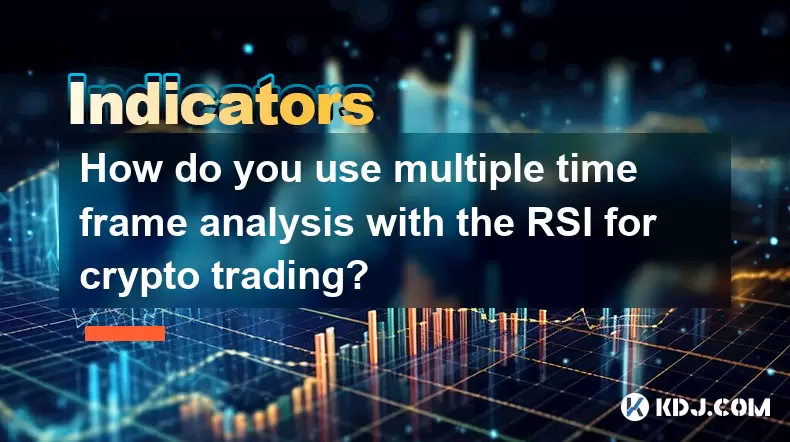
How do you use multiple time frame analysis with the RSI for crypto trading?
Aug 01,2025 at 05:19am
Understanding the Role of RSI in Crypto TradingThe Relative Strength Index (RSI) is a momentum oscillator that measures the speed and change of price ...
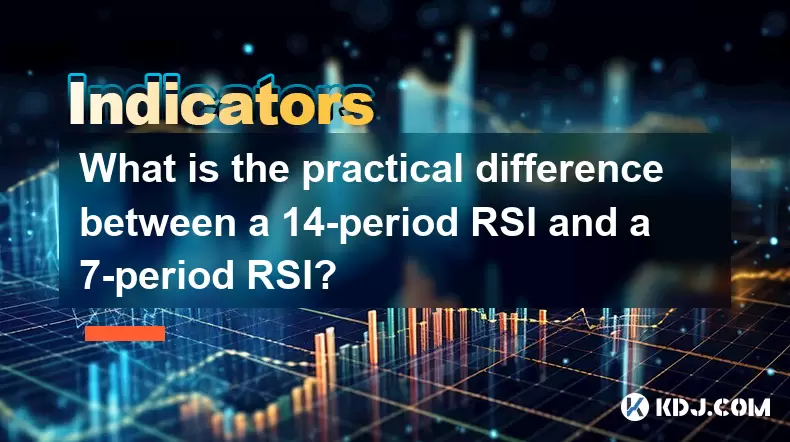
What is the practical difference between a 14-period RSI and a 7-period RSI?
Aug 01,2025 at 07:01am
Understanding the Relative Strength Index (RSI)The Relative Strength Index (RSI) is a momentum oscillator widely used in cryptocurrency trading to mea...
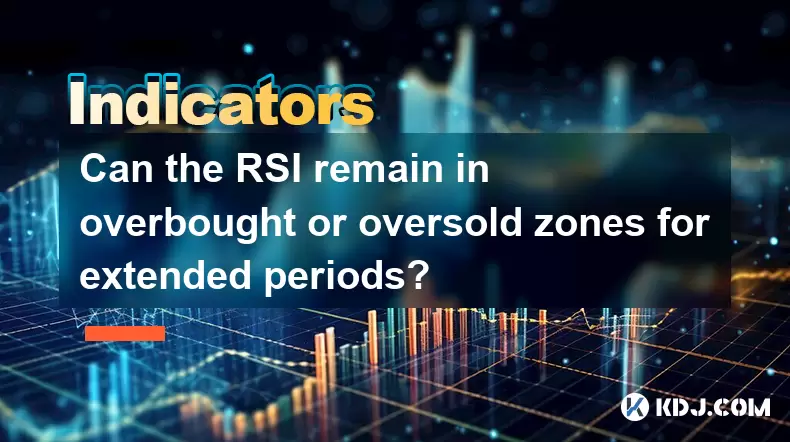
Can the RSI remain in overbought or oversold zones for extended periods?
Aug 01,2025 at 07:10am
Understanding the RSI and Its Standard InterpretationThe Relative Strength Index (RSI) is a momentum oscillator that measures the speed and change of ...

How can you use the RSI to determine exit points in crypto trades?
Aug 01,2025 at 04:29am
Understanding the Role of RSI in Crypto TradingThe Relative Strength Index (RSI) is a momentum oscillator widely used in the cryptocurrency market to ...
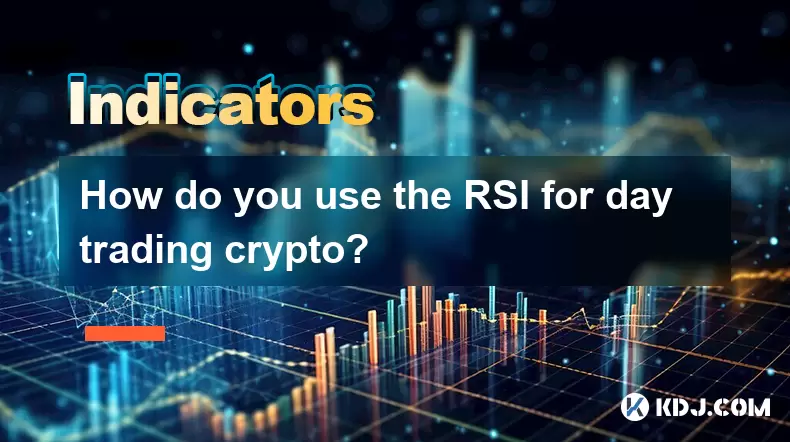
How do you use the RSI for day trading crypto?
Aug 01,2025 at 05:26am
Understanding the RSI in Cryptocurrency TradingThe Relative Strength Index (RSI) is a momentum oscillator that measures the speed and change of price ...

What does it signify when the MACD crosses below the zero line?
Aug 01,2025 at 01:43am
Understanding the MACD IndicatorThe Moving Average Convergence Divergence (MACD) is one of the most widely used technical analysis tools in the crypto...

How do you use multiple time frame analysis with the RSI for crypto trading?
Aug 01,2025 at 05:19am
Understanding the Role of RSI in Crypto TradingThe Relative Strength Index (RSI) is a momentum oscillator that measures the speed and change of price ...

What is the practical difference between a 14-period RSI and a 7-period RSI?
Aug 01,2025 at 07:01am
Understanding the Relative Strength Index (RSI)The Relative Strength Index (RSI) is a momentum oscillator widely used in cryptocurrency trading to mea...

Can the RSI remain in overbought or oversold zones for extended periods?
Aug 01,2025 at 07:10am
Understanding the RSI and Its Standard InterpretationThe Relative Strength Index (RSI) is a momentum oscillator that measures the speed and change of ...

How can you use the RSI to determine exit points in crypto trades?
Aug 01,2025 at 04:29am
Understanding the Role of RSI in Crypto TradingThe Relative Strength Index (RSI) is a momentum oscillator widely used in the cryptocurrency market to ...

How do you use the RSI for day trading crypto?
Aug 01,2025 at 05:26am
Understanding the RSI in Cryptocurrency TradingThe Relative Strength Index (RSI) is a momentum oscillator that measures the speed and change of price ...

What does it signify when the MACD crosses below the zero line?
Aug 01,2025 at 01:43am
Understanding the MACD IndicatorThe Moving Average Convergence Divergence (MACD) is one of the most widely used technical analysis tools in the crypto...
See all articles

























































































